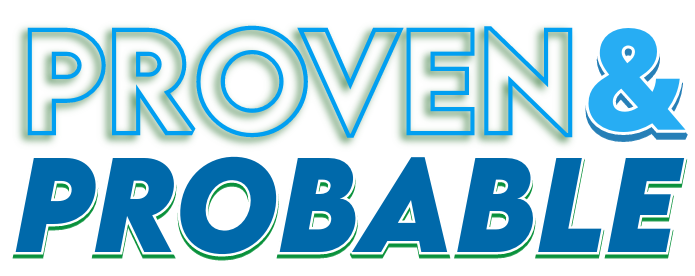Maurice:
Joining us for conversation is Tim Johnson, the CEO of Granite Creek Copper (TSX.V: GCX | OTCQB: GCXXF).
Tim Johnson:
Thank you, Maurice. It’s always a pleasure to be here.
Maurice:
What an exciting time to be speaking with you as Granite Creek Copper has just released some very exciting results to the market, which look to further extend the resource at the high-grade Carmacks copper-gold project. Before we begin, Mr. Johnson, please introduce us to Granite Creek Copper and the opportunity the company presents to shareholders.

Tim Johnson:
Granite Creek Copper is an exploration stage copper-focused company. We’re focusing on our Carmacks project in the center of Yukon, Canada, which is a great jurisdiction for development and we have excellent access to power and a highway. And just released some very exciting news of which we are very pleased and I appreciate this opportunity to discuss them and put them into context for readers.
Maurice:
Granite Creek Copper began its inaugural drill campaign back in November, which was quite successful, yielding 127 meters of 0.85% copper equivalent at Carmacks’s zone 13, and 4.6 meters of 7.5% copper equivalent at Carmacks north zone A, which was followed up in May with phase one of three drill programs slated for 2021.
In July, Granite Creek released the first string of asset results from phase one and the results were quite impressive. Just the other day, the company released a single hole, hole 11, which has some spectacular results. It would seem that there will be much more bluesky on the horizon on the Carmacks deposit. Mr. Johnson, I have table one from the press release before us. Please walk us through the asset results and in particular, hole 11.

Tim Johnson:
Hole 11 was a bit of an eye-opener for us. It was targeted in zone 2000 south. When we went into the campaign, we knew that there was some significant potential to grow the resources in 2000 South, and I must say Hole 11 delivered, along with a few other holes drilled in the 2000 south zone all intercepted mineralization well below the current resource model, so giving us the potential to significantly expand that resource. We’re pretty pleased. We think not only can we expand the resource, but if you notice that, looking at the resource table in the news release, that just about all the intercepts are of a higher grade than what’s in the table. That gives us the potential to not only grow the resource and as far as tonnage, but also potentially deliver a higher-grade resource on an updated resource estimate that we’re working on right now.
Tim Johnson:
Hole 11 intercepted 105 meters at 1.18% copper on an equivalent basis and above 0.97% copper on its own. Within that, there were 22 meters of over 2% copper. Those grades are pretty spectacular, and we think, again, that’s going to make a significant upgrade to the resource once we can complete a few more holes and model that. We don’t think this is a one-off hole. We think from the geophysics and what we’re seeing that we will be able to expand the resource in a much higher grade. Of course, we’ve got some more drilling to do to be able to deliver that, but we’re pretty bullish about that. We’ve refocused our phase three program, which we expect to start in a week or two, to target that area of 2000 south, and also to see if we can connect the 2000 south up to some of the other zones at Carmacks to make a more continuous ore body.
Maurice:
Now sticking with zone 2000 south, I have table two before us. What do these results seem to indicate?

Tim Johnson:
Table two is a resource calculation done by previous operators. This was published in 2017. You can see it’s quite a small resource, about 600,000 tons in the sulfide domain, which readers should know that the sulfide domain is what we’re targeting. The oxide, there is limited oxide in 2000 south. I think this is one of the reasons why this target is still here, because previous operators, again, we’re more focused on a small oxide operation. So they weren’t targeting the sulfide, but we see the real potential here to be the sulfide. This hole seems to verify that. Again, the grade on this hole is above what the grade of the resource, the current resource is. So good delivery on a couple of fronts, both potential tonnage increase, and potential grade increase.
Maurice:
And I do wish to highlight the geological acumen of Granite Creek Copper, as the Carmacks has had over 50,000 meters of exploration in the past and they were not able to locate the success you have in hole 11. What does that say about GCX and the success of the company moving forward?
Tim Johnson:

There’s a couple of reasons for that. The previous operators and there was nothing wrong with this, felt they had an economic resource in the oxide. The oxide is fairly near surface. Therefore, there was a lot of drilling done to prove up that resource, but there was very little drilling done to expand the resource into the sulfide material or to look for adjacent potential like we have at Carmacks North. Previous operators had quite a small land package for various reasons. They had to let some go in some of the tougher times in the industry, and we benefited from that, by having that land package available for us when we acquired it and then subsequently acquired coper north, of course, to consolidate the district.
Tim Johnson:
So yeah, you’re right. I mean 50,000 meters have been drilled, but a lot of it, as I said, was very near-surface, oxide focused, and left us the opportunity to come in and recognize the potential for significant expansion beneath the oxide into the sulfide, and really not that deep. The transition zone from oxide to sulfide occurs about 200 meters plus or minus below surface, so still well within an economic mining range, and really, a lot of bluesky left and a lot of discovery potential on the combined land package.
Maurice:
In previous interviews, we’ve discussed resource expansion. How does today’s press release increase the impact on the pending 43-101 mineral resource estimate?

Tim Johnson:
It significantly impacts mineral resource estimate. When consider where Hole 11 fits in relation to the current resource, and the entirety of the 105 meters of significant mineralization is below the current resource. So giving us up to 100, maybe 120 meters of down-dip extension on that resource. Now, we do need to infill around it. You can’t build a resource on a single hole, but some of the other holes that we’ve had that we released in July also support that down-dip extension of the resource. So we see significant growth potential here in this zone.
Tim Johnson:
We did drill again this year on Zone 13. We’re still waiting for those assays, but we see potential to grow in 13 as well. We also see potential to grow in the sulfide portion of Zone 1, which some of those assays were also released in our first release in July. So basically, three zones that we have resource growth potential, and we’re working on modeling those right now. We’re working with a third party to bring that resource into view, and we hope to be able to deliver that to the market in a fairly timely manner.
Maurice:
I referenced that Granite Creek will embark on three drill programs this year. When can shareholders expect the remaining results from phase one?

Tim Johnson:
That’s a really tough question to answer. As we move into the fall, the labs get busier and busier. So it’s really hard for me to nail down, but we would expect hopefully by late September to early October, we’d have final results on phase one. The phase two program we’re currently going on is an RC or a reverse circulation program. It’s targeting some of the earlier stage targets both at Carmacks north, which is a northern extension of our land package, and some of the earlier stage targets around the Carmacks deposit itself. Then the phase three program, which is now being re-imagined in and around 2000 south, will be starting in the coming weeks. Then that should give us fairly good assay flow and be able to continue to deliver results to the market as we move through the fall and into the winter months.
Maurice:
By the way, is phase three, is that an RC or is that diamond core, sir?
Tim Johnson:
Phase three is a diamond program. What we did this year, we budgeted for 10,000 meters. We completed 6,300 meters in the initial program, and we kept back some meterage to get the results in and to understand the geology of the orientation of the deposits. Now that those results are coming in as I said, we’re refocusing our efforts to build out where we have the best results and try to get … increase the tonnage and increase the grade in the zones that we think are going to make the most difference to the resource.
Maurice:
When we last spoke, Granite Creek Copper announced that it had entered into a contract with Sedgman and Mining Plus. What are the latest developments there?
Tim Johnson:
We working forward with Sedgman and Mining Plus. One of the big reasons we brought them in is two-fold. One of the reasons we brought them in was to optimize the process for both the oxide and sulfide processing that was initially developed in the 2017 PEA, and then also to develop a mine plan that would bring the sulfide in as well. The previous PEA only spoke to the oxide resource. It contemplated about a 7 mine life. We saw at least double that in the sulfide resource, but there was no mine plan for it. Sedgman and Mining Plus are working very hard to bring that into view. What’s going to happen, we’ll take that information and that will inform our next economic study to be done on the project. We will look at updating the preliminary economic assessment once we have all the results in both from the work that Sedgman and Mining Plus are doing, and of course, with an updated resource that is being currently worked on to bring both the tonnage and the mine plan and the processing plan all into one economic study.
Maurice:
Leaving the Carmacks project, sir, please provide us with an update on the capital structure for Granite Creek Copper.

Tim Johnson:
Granite Creek Copper has 127 million shares issued and outstanding. We’ve have warrants that are right at the strike price of the warrants, about $4.8 million in cash value of those warrants with the strike price at 20 cents. We see strength in the market moving into the fall, and we expect those warrants to assist the company in continuing on with our economic studies and upcoming programs. Meaning that we won’t be looking to conduct a dilutive financing in the near term. We expect strength in the copper market hopefully will allow us to delay any large financing for a while.
Maurice:
Before we close, Mr. Johnson, what would you like to say to shareholders?
Tim Johnson:
I think the copper space is an excellent space for speculative shareholders to be to be looking we think that the copper market is going to have strength moving through the remainder of this year and into next year. We’ve got an excellent project with excellent exposure to copper and to precious metals as well in a very good jurisdiction. I think it’s worth adding granite creek copper to your watch list and making sure you follow along with our story.
Maurice: Last question sir what did i forget to ask?
Tim Johnson:
Well as usual Maurice, you did an excellent job. I think the questions you asked are very good and I appreciate your time.
Maurice:
Thank you sir. Mr Johnson for someone that wants to get more information on granite creek copper please share the contact details.
Tim Johnson:
Please visit us at www.gcxcopper.com.
Maurice:
Mr. Johnson is always a pleasure to speak with you wishing you and Granite Creek Copper the absolute best sir.
And as a reminder, I am a licensed representative to buy and sell precious metals through Miles Franklin Precious Metals Investments, where we have several options to expand your precious metals portfolio, from physical delivery of gold, silver, platinum, palladium, and rhodium, to offshore depositories, and precious metals IRA’s. Give me a call at 855.505.1900 or you may email: Maurice@MilesFranklin.com. Finally, please subscribe to www.provenandprobable.com, where we provide: Mining Insights and Bullion Sales, subscription is free.






